11th August, 2024
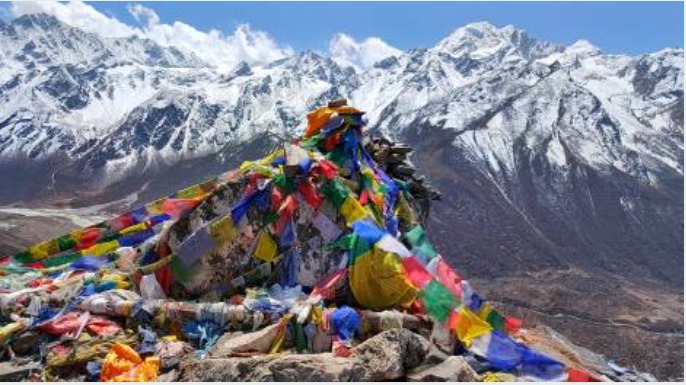
Aug 14, 2023
Langtang Valley Trek in February
- Langtang Valley Trek in February Highlights
- Langtang Trek in February Weather, Climate, and Temperature
- Guide and Porter
- Permit, Food, and Accommodation
- Transportation Mode
- Can I Do Solo Langtang Trek in February?
- How Difficult is the Langtang Trek in February?
- Is the Langtang Valley Trek Worth It?
- What To Pack in February for Langtang Trek
- How Hard is the Langtang Trek?
- Langtang Trek Cost
- Conclusion
- Langtang Region Packages
The Langtang Valley Trek in February offers a unique and serene experience for trekkers seeking to explore the majestic Himalayas. Nestled in the heart of Nepal, the Langtang Valley is renowned for its stunning landscapes, rich cultural heritage, and diverse flora and fauna. February, being a winter month, brings a special charm to the valley with its snow-capped peaks and tranquil environment.
One of the highlights of trekking in February is the relatively fewer crowds. This allows for a more intimate connection with nature and the local Tamang and Sherpa communities. The trails are quieter, and the teahouses are less crowded, providing a peaceful retreat for trekkers.
The weather in February can be cold, especially at higher altitudes, with temperatures often dropping below freezing at night. However, the days are usually clear and crisp, offering breathtaking views of the Langtang Lirung, Ganesh Himal, and other towering peaks. It’s essential to be well-prepared with appropriate winter gear, including warm clothing, sturdy boots, and trekking poles.
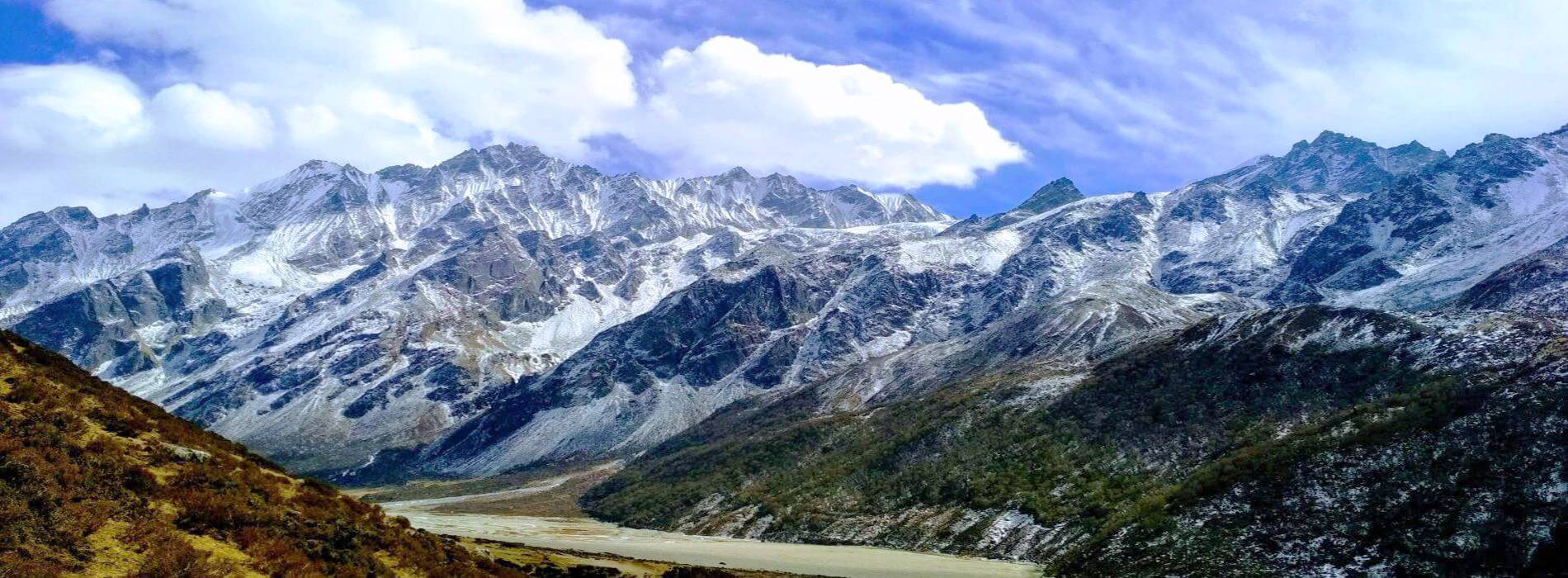
LANGTANG VALLEY TREK
A visit to Langtang National Park, Nepal’s first Himalayan national park- formed in 1976, is a wonderland of natural beauty and rich Tamang culture and only a hop-step and jump from Kathmandu!The Lang...
The trek typically starts from Syabrubesi, winding through lush forests, terraced fields, and picturesque villages. As you ascend, the landscape transforms into a winter wonderland, with snow-covered trails and frozen streams. The Kyanjin Gompa, a significant Buddhist monastery, is a must-visit, offering panoramic views and a glimpse into the spiritual life of the region.
The Langtang Valley Trek in February is a magical journey that combines natural beauty, cultural richness, and a sense of adventure. With proper preparation and a spirit of exploration, it promises an unforgettable experience in the heart of the Himalayas.
Langtang Valley Trek in February Highlights
The Langtang Valley Trek in February offers a unique blend of natural beauty and cultural richness. One of the main highlights is the serene, snow-covered landscape that transforms the valley into a winter wonderland. The clear skies provide stunning views of peaks like Langtang Lirung and Ganesh Himal. The quieter trails mean fewer trekkers, allowing for a more intimate experience with nature and local Tamang and Sherpa communities. Key attractions include the Kyanjin Gompa, a significant Buddhist monastery, and the Langtang National Park, home to diverse flora and fauna. The frozen waterfalls and icy streams add a magical touch to the trek, making it a memorable adventure.
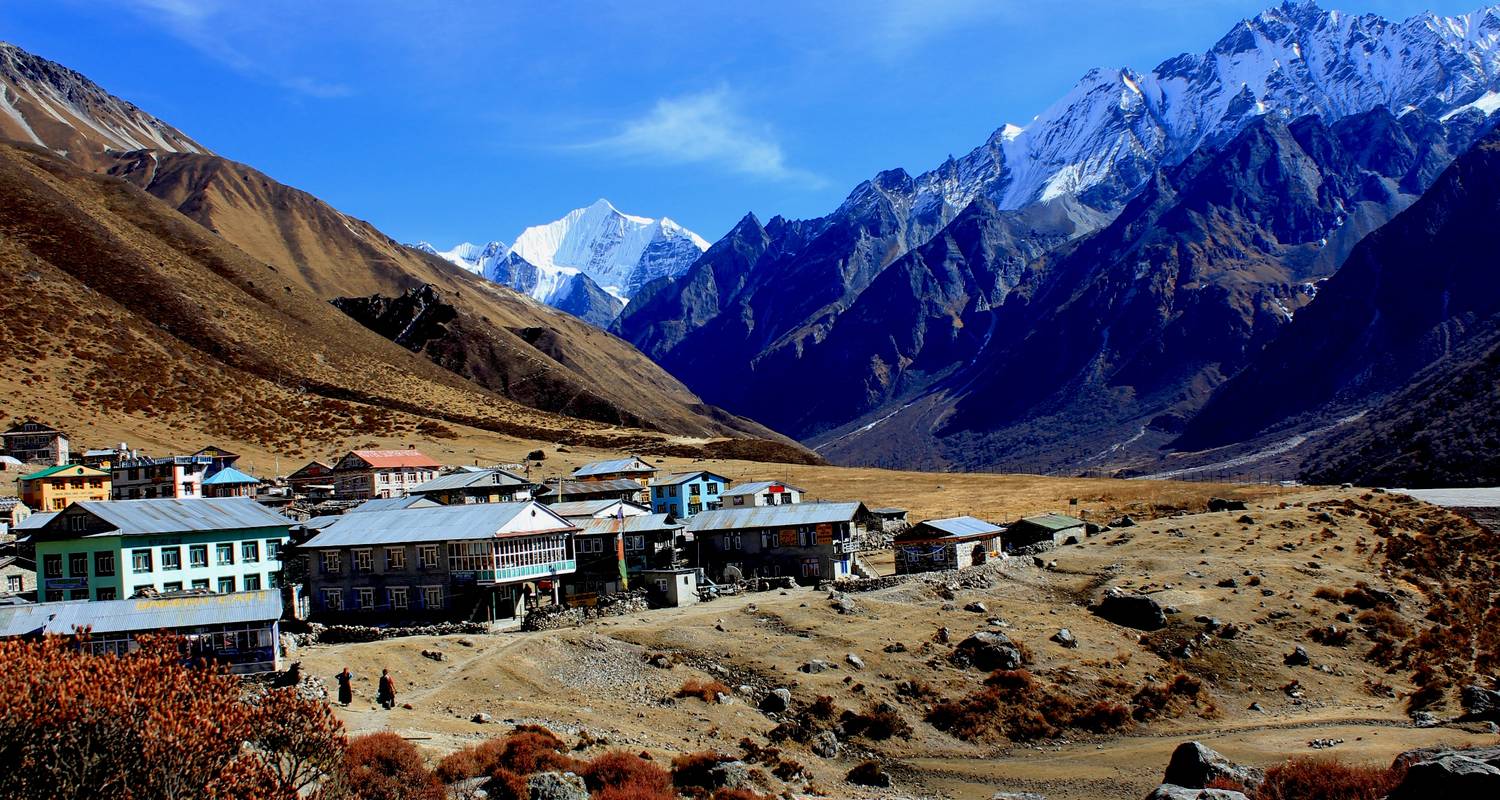
LANGTANG VALLEY TREK 7 DAYS
The Langtang valley, located 61.8 km far from Kathmandu, amazing travelers with its Himalayan streams and magnificent views. Mt. Langtang Lirung (7246 meters) surrounds the colorful rhododendron,...
Langtang Trek in February Weather, Climate, and Temperature
February in Langtang Valley is characterized by cold temperatures and clear skies. Daytime temperatures range from 5°C to 10°C, while nighttime temperatures can drop below freezing, often reaching -10°C or lower at higher altitudes. The weather is generally stable, with minimal rainfall, making it ideal for trekking. However, the cold can be intense, especially in the mornings and evenings, so proper winter gear is essential. The snow-covered trails and frozen streams add to the trek's beauty but also require careful navigation. Overall, the crisp, clear weather offers breathtaking views of the snow-capped peaks and a serene trekking experience.
Guide and Porter
Hiring a guide and porter for the Langtang Valley Trek in February is highly recommended. A guide can provide valuable insights into the local culture, history, and geography, enhancing your trekking experience. They are also crucial for navigating the snow-covered trails and ensuring your safety. A porter can carry your heavy gear, allowing you to trek more comfortably and enjoy the scenery. Both guides and porters are familiar with the terrain and can assist in case of emergencies. Their local knowledge can also help you find the best teahouses for food and accommodation, making your trek more enjoyable and stress-free.
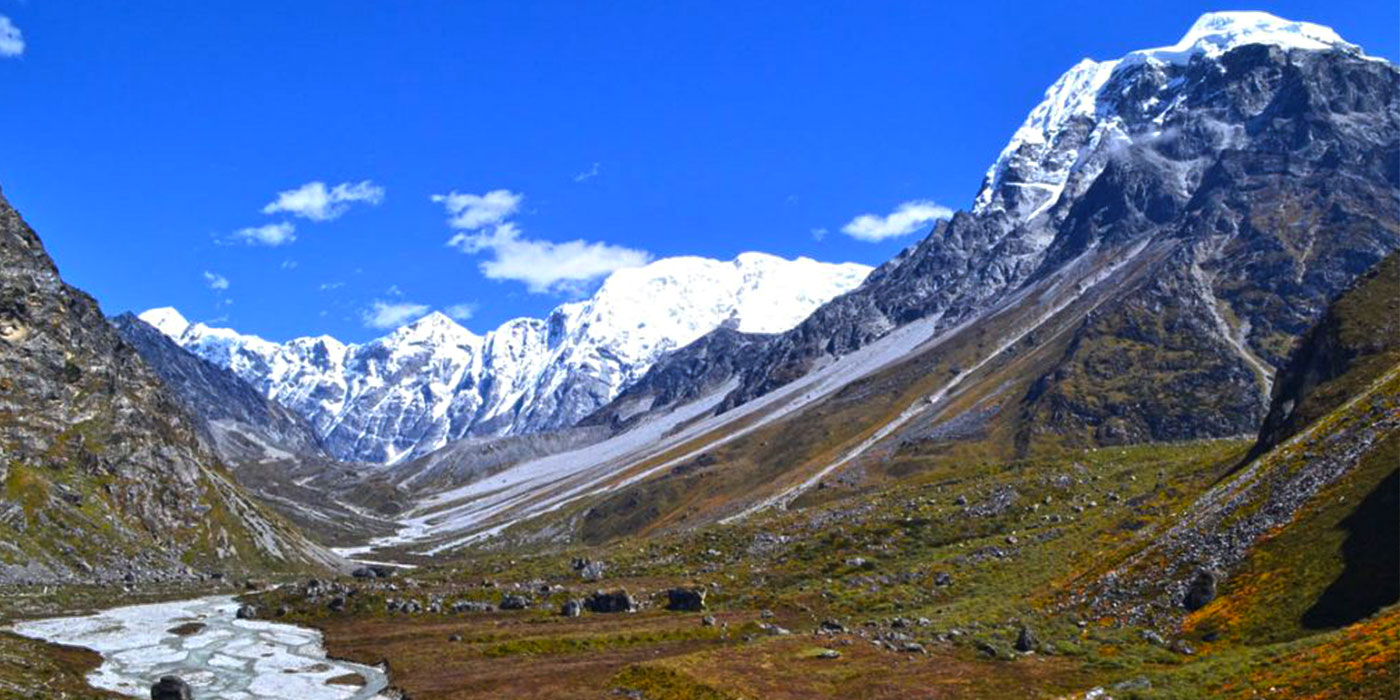
LANGTANG VALLEY TREK 8 DAYS
Langtang National Park is a land of unspoiled beauty, becoming Nepal’s first Himalayan national park in 1976. It is also home to the Tibetan Buddhist Tamang people and is a stone’s throw from Kat...
Permit, Food, and Accommodation
For the Langtang Valley Trek, you'll need two permits: the Langtang National Park Permit and the TIMS (Trekkers' Information Management System) card. These can be obtained in Kathmandu. Accommodation is primarily in teahouses, which offer basic but comfortable lodging. In February, teahouses are less crowded, providing a more peaceful stay. The food is typically Nepali cuisine, including dal bhat (lentil soup with rice), momo (dumplings), and various noodle and rice dishes. Some teahouses also offer limited Western options. It's advisable to carry some high-energy snacks and water purification tablets, as the cold weather can increase your energy needs.
Transportation Mode
The most common way to reach the starting point of the Langtang Valley Trek is by road. From Kathmandu, you can take a bus or hire a private jeep to Syabrubesi, the trek's starting point. The journey takes about 7-9 hours, depending on road conditions. Buses are more economical but can be crowded and less comfortable. Private jeeps offer a more comfortable and quicker ride but are more expensive. The road can be rough and bumpy, especially in winter, so be prepared for a bit of an adventure even before you start trekking. Once in Syabrubesi, the trek begins on foot.
Can I Do Solo Langtang Trek in February?
While it is possible to do the Langtang Valley Trek solo in February, it is not recommended for everyone. The cold weather, snow-covered trails, and potential for sudden weather changes make it challenging. Solo trekkers need to be well-prepared with proper gear, navigation skills, and a good understanding of the route. Hiring a guide can significantly enhance your safety and experience, providing local knowledge and assistance in emergencies. If you choose to trek solo, ensure you inform someone about your itinerary and check in regularly. Always carry a map, compass, and sufficient supplies to handle unexpected situations.
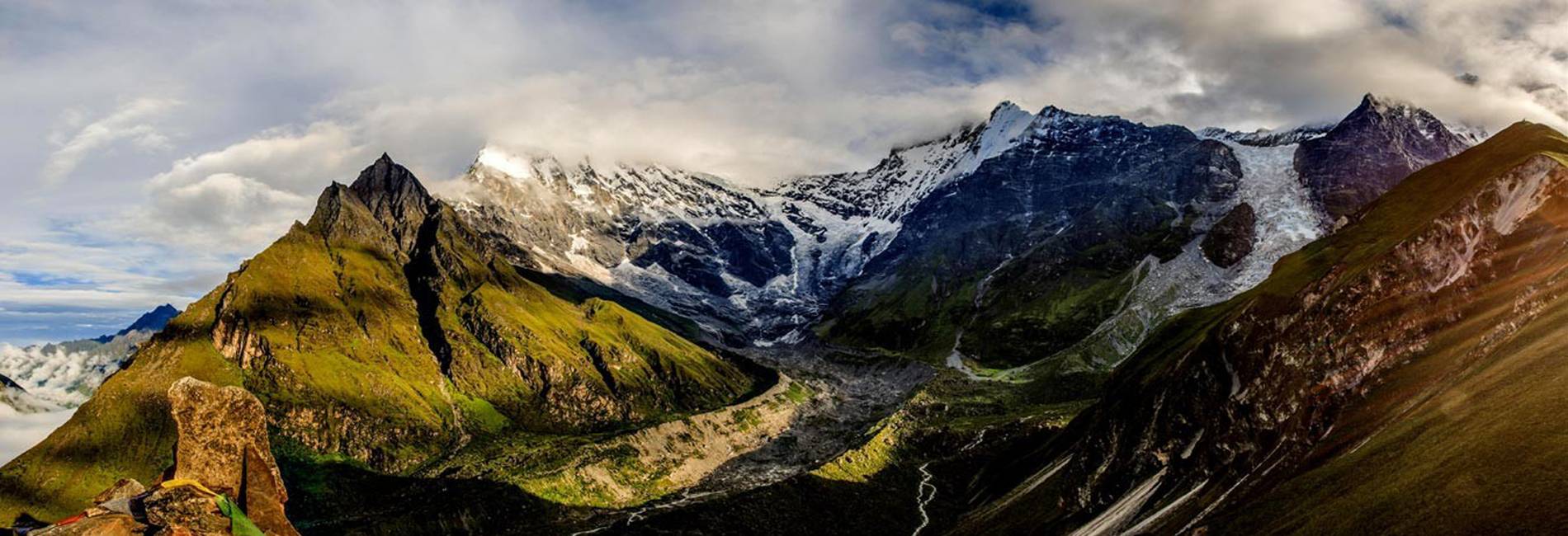
TAMANG HERITAGE TREK
LET THIS BE YOUR AWAKENING AND INTRODUCTION TO TIBETAN BUDDHISM.This is a spiritual journey into the heart of the Tibetan Buddhist region in the Langtang Valley on the Tibetan border. This maybe your...
How Difficult is the Langtang Trek in February?
The Langtang Valley Trek in February is moderately difficult, with added challenges due to winter conditions. The cold weather and snow-covered trails require extra preparation and gear, such as warm clothing, sturdy boots, and trekking poles. The altitude can also pose a challenge, with the highest point being Kyanjin Gompa at 3,870 meters. Acclimatization is crucial to avoid altitude sickness. The trails can be slippery and harder to navigate, making the trek physically demanding. However, with proper preparation, a reasonable fitness level, and possibly the assistance of a guide, the trek is manageable and highly rewarding.
Is the Langtang Valley Trek Worth It?
Absolutely, the Langtang Valley Trek is worth it, especially in February. The winter landscape offers a unique and serene beauty, with snow-capped peaks, frozen waterfalls, and clear skies providing breathtaking views. The quieter trails allow for a more intimate experience with nature and local cultures. The trek offers a mix of natural beauty and cultural richness, with highlights like the Kyanjin Gompa and Langtang National Park. Despite the cold and challenging conditions, the sense of adventure and the stunning scenery make it a memorable and rewarding experience. Proper preparation and a spirit of exploration ensure that the trek is well worth the effort.
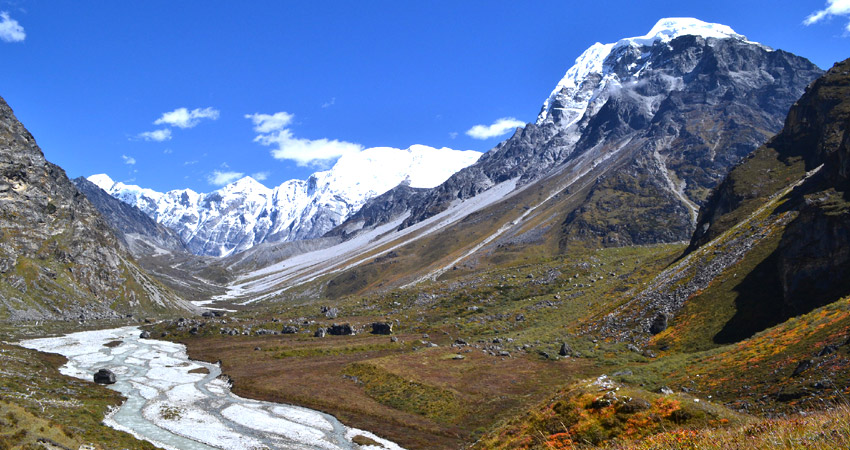
LANGTANG GOSAINKUNDA LAKE TREK
The Langtang Gosainkunda Lake (4380m) Trek takes you to alpine regions that will blow your mind! In a short trip from Kathmandu, you will find yourself in a pristine countryside in Nepal’s first...
What To Pack in February for Langtang Trek
Packing for a trek in the Langtang Valley in February requires careful consideration due to the cold weather and potential for snow. Here’s a list of essentials to ensure you stay warm, safe, and comfortable:
Clothing:
1. Base Layers:
- Thermal tops and bottoms
- Moisture-wicking underwear
2. Insulating Layers:
- Fleece jacket or down jacket
- Insulated pants
3. Outer Layers:
- Waterproof and windproof jacket
- Waterproof pants
4. Additional Clothing:
- Long-sleeve shirts
- Trekking pants
- Warm hat and gloves
- Buff or neck gaiter
- Warm socks (several pairs)
- Gaiters (to keep snow out of your boots)
Footwear:
- Sturdy, waterproof trekking boots
- Comfortable camp shoes or sandals
Gear:
- Trekking poles
- Sleeping bag (rated for cold temperatures)
- Sleeping bag liner (for extra warmth)
- Backpack (with rain cover)
- Daypack (for shorter hikes and carrying essentials)
- Headlamp (with extra batteries)
- Sunglasses (with UV protection)
- Water bottles or hydration system
- Water purification tablets or filter
- Trekking map and compass or GPS device
Personal Items:
- Personal first aid kit
- Sunscreen and lip balm (with high SPF)
- Toiletries (biodegradable soap, toothbrush, toothpaste, etc.)
- Quick-dry towel
- Wet wipes and hand sanitizer
- Snacks and energy bars
- Camera or smartphone (with charger and extra batteries)
Documents:
- Passport and necessary permits
- Travel insurance details
- Emergency contact information
Optional Items:
- Lightweight crampons (if expecting icy conditions)
- Portable charger or power bank
- Journal and pen
- Lightweight book or e-reader
Remember to pack light but ensure you have all the necessary items to stay warm and safe. The weather in February can be quite cold, especially at higher altitudes, so prioritize warmth and protection from the elements. Enjoy your trek!
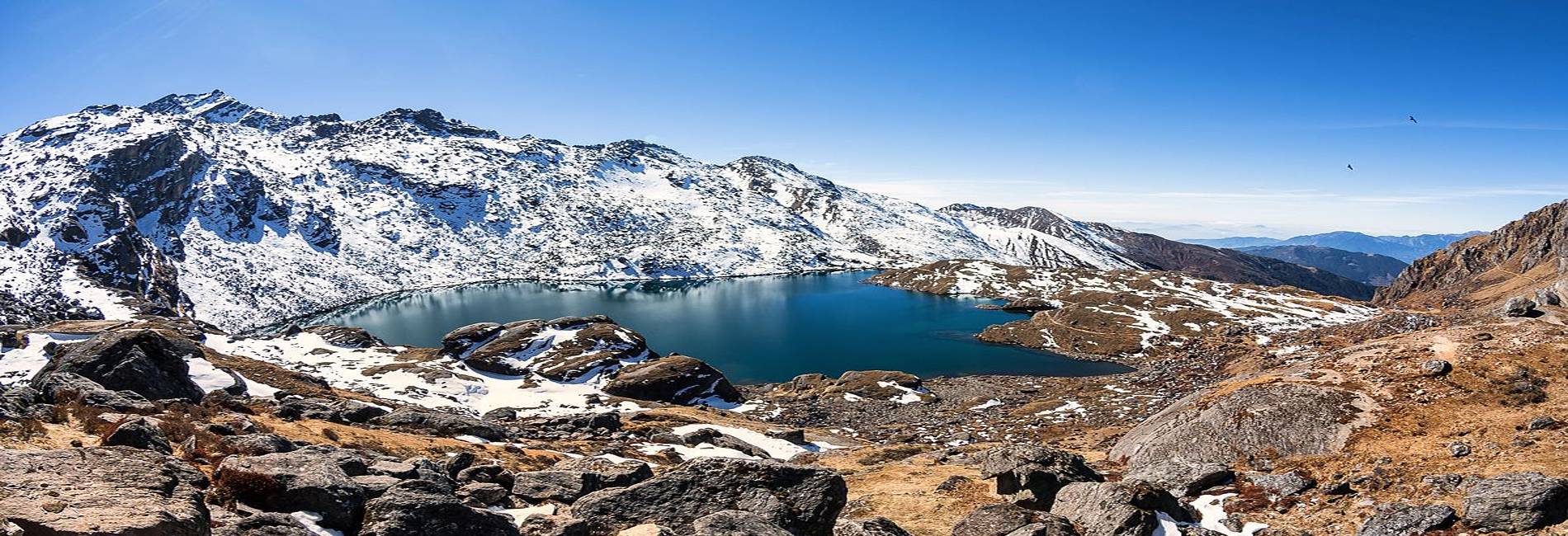
GOSAINKUNDA LAKE TREK
Bath in the pristine clear “holy” water of Gosainkunda Lake, a religious site and abode of Hindu deities Shiva and Gauri. This is a short trek in the much less crowded and quiet Langtang Region o...
How Hard is the Langtang Trek?
The Langtang Trek is considered moderately challenging, making it suitable for trekkers with a reasonable level of fitness and some prior trekking experience. The trek involves daily walks of 5-7 hours, with significant elevation changes. The highest point of the trek is Tserko Ri, which stands at 4,984 meters (16,352 feet). Altitude sickness can be a concern, so proper acclimatization is crucial. The trails can be steep and rugged, with some sections requiring careful navigation, especially in snowy or wet conditions. However, the breathtaking scenery, including lush forests, alpine meadows, and stunning mountain views, makes the effort worthwhile.
Langtang Trek Cost
The cost of the Langtang Trek can vary depending on several factors, including the duration of the trek, the type of accommodation, and whether you choose to go with a guided tour or independently. On average, you can expect to spend between $500 to $1,000 for a 7-10 day trek. This estimate includes:
- Permits: Approximately $30 for the Langtang National Park entry permit and $20 for the TIMS card.
- Accommodation: Basic teahouses cost around $5-$10 per night.
- Food: Meals can range from $5-$10 each, depending on the location and type of food.
- Guides and Porters: Hiring a guide can cost around $25-$30 per day, while a porter may cost $15-$20 per day.
- Transportation: A round-trip bus fare from Kathmandu to Syabrubesi (the starting point) is about $10-$20.
Additional costs may include gear rental, tips for guides and porters, and personal expenses.

HELAMBU TREK
Big on beauty for those short on time!The Helambu region is a short trek about 72 km from Kathmandu and offers trekkers so much in such a short space of time. The word Helambu derives from the w...
Conclusion
The Langtang Trek offers a perfect blend of adventure, natural beauty, and cultural experiences. While it presents a moderate challenge, the trek is accessible to those with a decent fitness level and some trekking experience. The cost is relatively affordable compared to other popular treks in Nepal, making it an excellent choice for budget-conscious adventurers. With proper preparation and acclimatization, the Langtang Trek promises an unforgettable journey through one of Nepal's most stunning regions.
Langtang Region Packages
Tamang Heritage and langtang Valley Trek
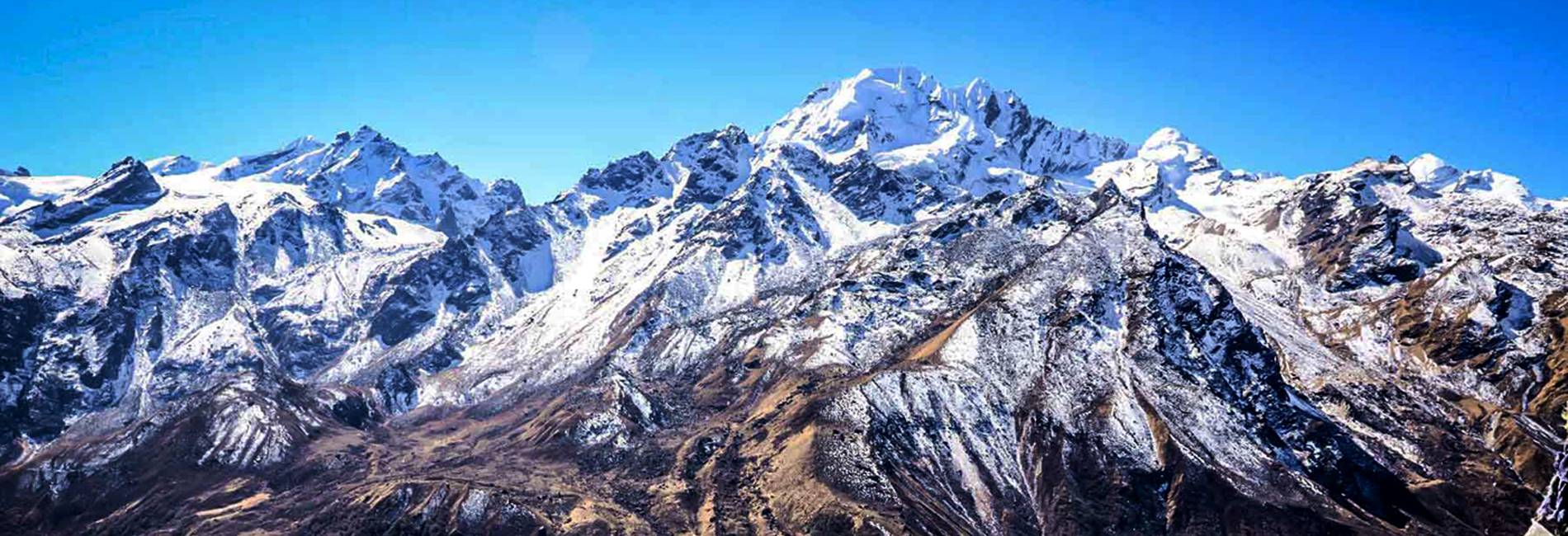
GANGJA LA PASS TREK
The Gangja La Pass (5130m) Trek has so much to offer while a stone’s throw from Kathmandu. Trekking into this region is a journey rich in Tibetan culture and Buddhist traditions. The Tamang villages w...
Any Questions? Let Us Know.
Recent Posts
30th July, 2024
30th July, 2024


















